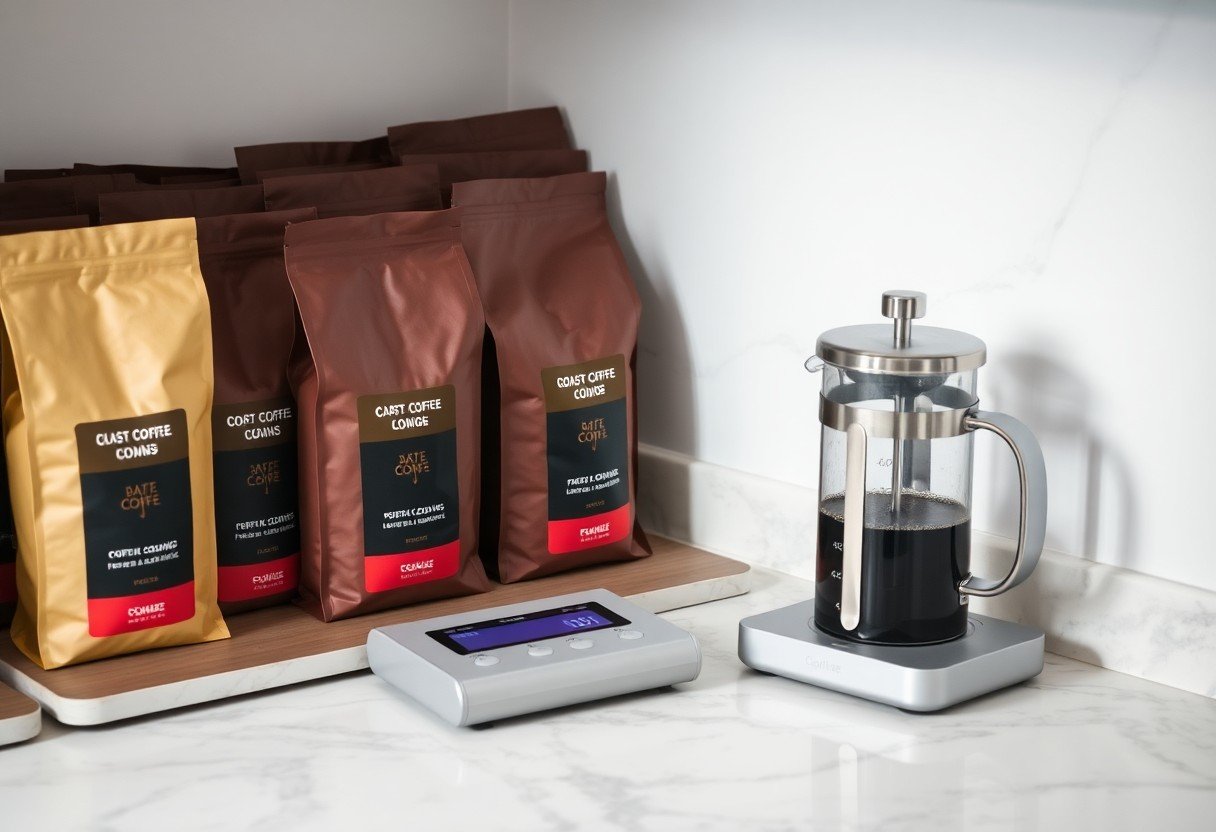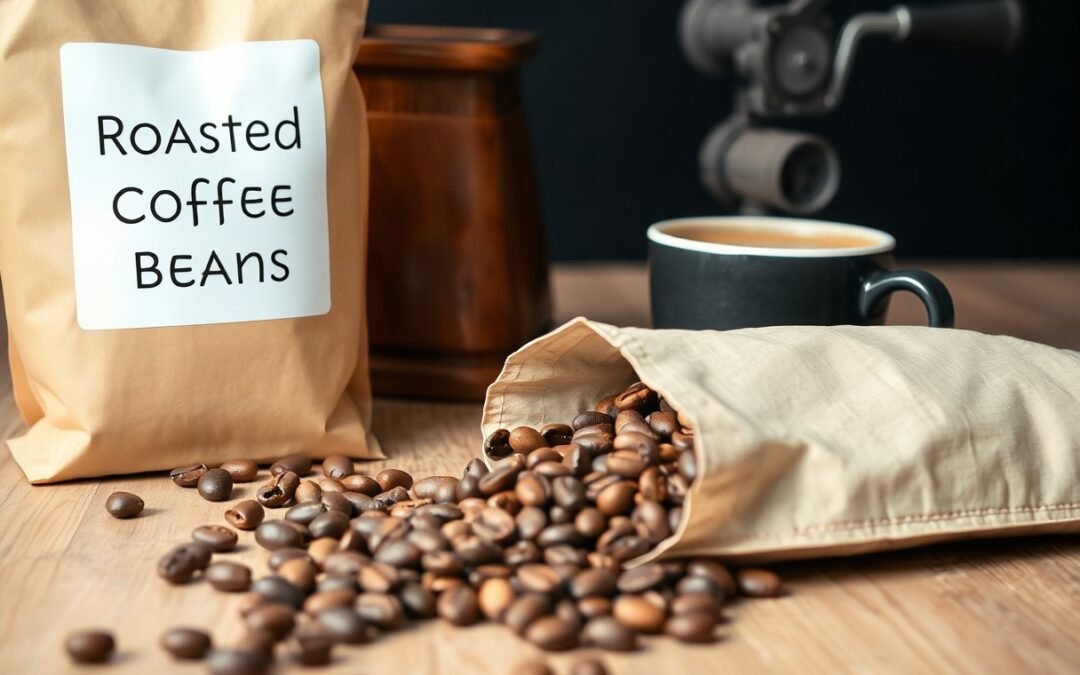Most coffee enthusiasts often wonder about the longevity of their beloved beans, from the moment they’re roasted to when they reach your cup. Understanding the shelf life of coffee beans is important for ensuring optimal freshness and flavor in your brews. In this post, we’ll explore how long different types of coffee beans really last, the best storage practices to maintain their quality, and tips on how to maximize your brewing experience. Get ready to enhance your coffee journey with insights that will keep your cup tasting its best.
The Lifecycle of Coffee Beans: From Harvest to Cup
Coffee beans undergo a fascinating journey from the moment they are harvested to when they land in your cup. Once the cherries of the coffee plant are picked, they are processed to extract the beans, which are then dried, sorted, and packaged. This preparation is followed by roasting, where the natural sugars within the beans caramelize, developing rich flavors. Finally, these roasted beans are ground and brewed, crafting the aromatic cup of coffee you savor. Each step in this lifecycle influences the final taste and quality, making it necessary to understand what happens from harvest to brewing.
The Journey of Coffee Beans
Your coffee beans begin on an incredible journey that begins with harvesting on coffee plantations. After picking, beans are pulped, fermented, and dried, followed by shipping to roasteries around the world. Each geographic region imparts unique characteristics to the beans, influenced by climate, soil, and processing methods. Post-roasting, the journey concludes in your kitchen, transforming into a fragrant brew. Knowing this journey enriches your appreciation for each cup of coffee.
Factors Affecting Freshness Pre-Roasting
- Processing method: Wet or dry methods significantly affect flavor.
- Storage conditions can either enhance or diminish freshness.
- Time since harvesting matters; the fresher, the better.
- Perceiving freshness is key; your senses can detect the differences.
Processing methods greatly impact the beans’ quality and taste. Beans treated with wet processing, for example, often develop brighter acidity, while dry processing can lead to a more complex sweetness. Temperature and humidity during storage likewise play a vital role; too much heat can degrade flavors, making the beans subpar by the time they reach you. To retain peak freshness, consider sourcing beans from local roasters who prioritize optimal packaging and transport methods.
- Proper temperature and humidity levels during storage are necessary.
- Avoiding exposure to air helps beans keep their profile.
- Latest harvests usually offer superior flavor experiences.
- Perceiving these factors can guide your purchasing decisions.
The Impact of Roasting on Coffee Longevity
The roasting process plays a significant role in the shelf life of coffee beans. Roasting transforms green coffee into the aromatic beans you love, but it also triggers a series of chemical changes that can influence freshness and flavor over time. The degree of roast—light, medium, or dark—impacts not only the taste but also how quickly the coffee may go stale. Oxygen, light, heat, and moisture all contribute to the degradation of flavors, making understanding the effects of roasting vital for optimal enjoyment.
Chemical Changes During Roasting
During roasting, coffee beans undergo complex chemical reactions, including caramelization and the Maillard reaction, which enhance flavor development. These processes create hundreds of volatile compounds that give coffee its distinctive aromas and tastes. The transformation also leads to the release of carbon dioxide, which, if trapped, contributes to a rapid deterioration in flavor once the bag is opened. Your perfectly roasted beans can lose their vibrant character within weeks if exposed to air.
Ideal Consumption Windows Post-Roasting
After roasting, coffee beans are at their peak flavor for a limited time. Generally, you should aim to consume them within 2-4 weeks post-roast for the best flavor experience. While some beans improve after a short resting period, their freshness wanes as the days pass. Ideally, you’ll want to grind and brew within that time frame to enjoy the nuanced flavors that emerge from freshly roasted beans.
Understanding the ideal consumption windows allows you to preserve the integrity of your coffee. Freshly roasted beans release carbon dioxide over the first few days, which can enhance the brew’s flavor. As time progresses, this gas diminishes, leaving your beans vulnerable to staleness. Planning to finish your beans within those 2-4 weeks ensures you’ll experience optimal flavors, making each cup a delightful adventure rather than a faded echo of the aroma you initially cherished.
Brewing Freshness: The Best Practices for Every Method
Optimal brewing begins long before the kettle is on. Each brewing method, whether it’s a French press, pour-over, or espresso, requires specific practices to ensure that the flavor profile of your coffee is fully realized. Pay attention to water temperature, brewing time, and, perhaps most importantly, the freshness and grind of your coffee beans. Mastering these elements will enhance your daily ritual and elevate your coffee experience to new heights.
Grind Size and Its Role in Flavor Preservation
Your choice of grind size directly impacts flavor extraction during brewing. Coarse grinds allow for longer steeping times, making them ideal for methods like French press, while finer grinds enhance surface area for quicker extractions, perfect for espresso. The key is to match your grind size with your chosen brewing method to achieve the best possible flavor outcome. A mismatched grind can lead to either under-extraction or over-extraction, resulting in a less than satisfying cup.
Storage Solutions for Maximizing Bean Shelf Life
Proper storage is vital to keep coffee beans fresh for as long as possible. An airtight container stored in a cool, dark place will significantly extend the beans’ shelf life. Avoid transparent containers or locations exposed to light and heat. Vacuum-sealed bags or specialized coffee canisters with CO2 valves can further protect against oxidation, helping maintain full flavor and aroma until you’re ready to brew.
To maximize the shelf life of your coffee beans, consider purchasing smaller quantities that you can consume within a few weeks. Freshly sealed bags can often keep your coffee viable for several months, but once opened, exposure to air begins to degrade the quality. Frequent oxygen exposure causes the natural oils in coffee to turn rancid. If you have excess beans, storing them in separate, small vacuum-sealed pouches can allow you to open only what you need, preserving the rest for later enjoyment. Keep in mind that freezing can be a viable option, but avoid repeated thawing and refreezing, which can cause moisture buildup and affect flavor.

Myths and Misconceptions Surrounding Coffee Longevity
Many coffee lovers hold onto various myths regarding how long their beans last and how best to store them. These misunderstandings can lead to subpar brews and wasted products. It’s time to unpack the misconceptions surrounding coffee longevity and shed light on the truth behind them.
The Truth About Expiration Dates
Expiration dates on coffee packages are often misleading. While they inform you about quality, coffee doesn’t exactly “expire” like perishable foods. A bag of roasted coffee can still be flavorful weeks or even months after its printed date, depending on storage conditions and bean quality.
Common Misunderstandings on Proper Storage
If you think storing your coffee in the fridge or freezer is always the best option, you’re not alone, but you may be mistaken. Excess moisture and odors in these environments can negatively affect flavor, while the ideal storage conditions involve a cool, dark, and airtight container.
Many coffee enthusiasts mistakenly believe that any airtight container will suffice for proper storage. While it’s true that oxygen is enemy number one for coffee freshness, other factors come into play. For instance, glass jars can be great if kept in a consistently cool place, but they also expose beans to light and temperature changes if kept on a counter. In contrast, specialized coffee canisters designed with UV resistance and degassing valves can keep your beans fresh much longer, giving you that rich flavor you crave with every cup. Always prioritize a dry and light-free environment to maximize longevity and taste.
How to Identify Coffee Bean Freshness: Signs and Tips
Assessing the freshness of your coffee beans is crucial for the best flavor in your cup. Here are some signs and tips to help you determine if your beans are still fresh:
- Check the roast date on the packaging.
- Look for a glossy sheen, indicating oils released from fresh beans.
- Smell for strong, aromatic scents.
- Taste a brew; stale beans lack flavor and complexity.
Knowing these indicators can lead you to make better choices when selecting and brewing your coffee.
Taste and Aroma Indicators
Your senses are your best allies in identifying freshness. Fresh coffee beans emit a vibrant aroma that fills the room, while stale beans may smell flat or even rancid. A noticeable bitterness in your brew can signal that the beans are beyond their prime. Remember that freshly roasted beans can produce a complex, well-rounded flavor profile, whereas older beans will taste more one-dimensional.
Visual Clues to Look For
Visual inspection is just as important as aroma and taste in assessing coffee freshness. Freshly roasted beans often boast a rich, oily surface, while stale beans can look dull and dry. Additionally, you should avoid beans that contain large cracks or visible blemishes, as they could indicate degradation in quality.
Upon closer examination, beans should have a consistent color and uniform size. Beans that are too light or too dark may suggest variations in freshness and roasting quality. A well-sealed bag can also preserve their color and sheen, indicating better storage conditions.
Summing up
Presently, it’s important for you to understand that the longevity of coffee beans depends on various factors including storage conditions and whether they are whole or ground. Ideally, to maintain optimal flavor and aroma, you should consume roasted coffee beans within a month for peak freshness. Ground coffee is best used within two weeks. By following proper storage techniques, such as keeping them in an airtight container away from light, heat, and moisture, you can enjoy the best your coffee has to offer for as long as possible.
FAQ
Q: How long do roasted coffee beans last before they lose their flavor?
A: Roasted coffee beans typically maintain their best flavor for about 2 to 4 weeks after roasting. After this period, while they may not spoil, their freshness and flavor will begin to diminish. To ensure a better tasting cup, it is advisable to use roasted beans within this timeframe and store them in an airtight container away from light, heat, and moisture.
Q: Can I still use coffee beans after the labeled expiration date?
A: Yes, coffee beans can still be used after the expiration date, but their flavor and aroma may not be as robust. The expiration dates are often guidelines for peak freshness rather than strict cutoffs. If stored properly, coffee beans can remain usable for several months to even a year, although it’s best to consume them within a timely manner to enjoy the intended taste experience.
Q: How should I store coffee beans to maximize their lifespan?
A: To maximize the lifespan of coffee beans, store them in an airtight container made of opaque material to protect them from light exposure. Keeping them in a cool, dry place, away from heat sources like stovetops or sunlight, is also important. Avoid storing beans in the fridge or freezer, as moisture can negatively affect their quality. Proper storage will help preserve their flavor and freshness for a longer period.

